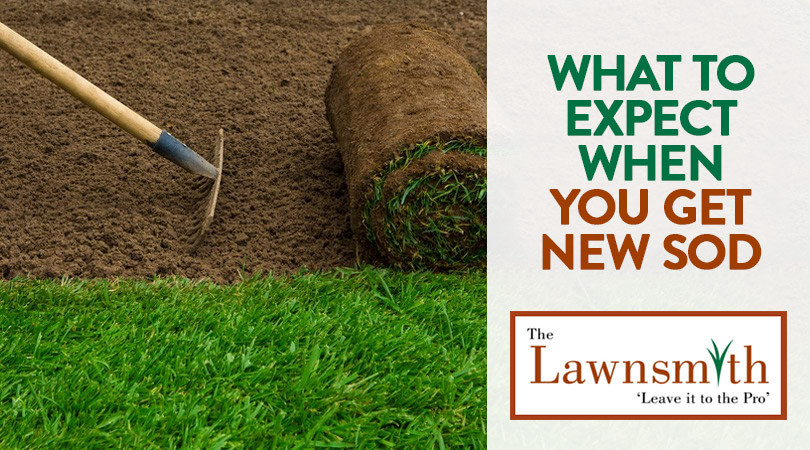What to Expect When You Get New Sod

2017-07-05
It’s never an easy decision to replace your lawn with sod, but sometimes it’s in such poor shape that nothing you do makes lasting improvements. Perhaps you’re having a new home built and want to ensure that you have high high-quality grass from the start. Sod, also known as turf grass, is fresh, pre-planted grass that the staff of The Lawnsmith transfers to your yard. It also contains roots and other plant material that holds it together. New sod provides many advantages, including the following:
Unlike grass seed when you must wait for your new lawn to grow, sod provides you with an immediate new lawn
- You won’t have to water sod as often as you would have to water grass seeds
- If the grass is a little long for your liking, you don’t have to wait to mow it
- Your new grass is healthy and weed-free
- It’s easier for sod to take root, which means it can provide more reliable results than you would get with grass seed
- You can lay sod at any time of year
The one possible disadvantage to choosing sod over grass seed is that many homeowners in Bloomington and the south metro areas of Minneapolis and St. Paul find it difficult to install by themselves. Fortunately, the professionals at The Lawnsmith have several years of experience with installing new residential lawns. It’s enjoyable for us to see a yard completely transform with healthy and attractive new grass.
Steps Involved in Sod Installation
Laying sod is an involved process. We normally follow a procedure that looks like this:
- Install a new irrigation system
- Remove stones, roots, and other debris to create a surface that is as smooth as possible
- Rake the sod’s soil until it falls below our desired grade by about two and one-half inches
- Install new lawn edging, which may be made from brick, concrete, plastic, or steel
- Add a compost and topsoil blend
- Create a base for your new lawn by grading the surface of the soil
- Ensure that your new grass has enough alkaline pH
- Carefully lay each row of sod and trim any excess edges
- Apply a starter fertilizer
- Spray water over the new grass
For best results, you should plan to water the newly installed sod three times daily for the first two weeks. If the temperature dips significantly or we experience heavy rain, you can cut back on your watering. Regular watering while the sod gets firmly established ensures that it gets off to the best possible start. Please contact The Lawnsmith to request an estimate or schedule a consultation today.
Photo Credit: erikreis / Getty Images


